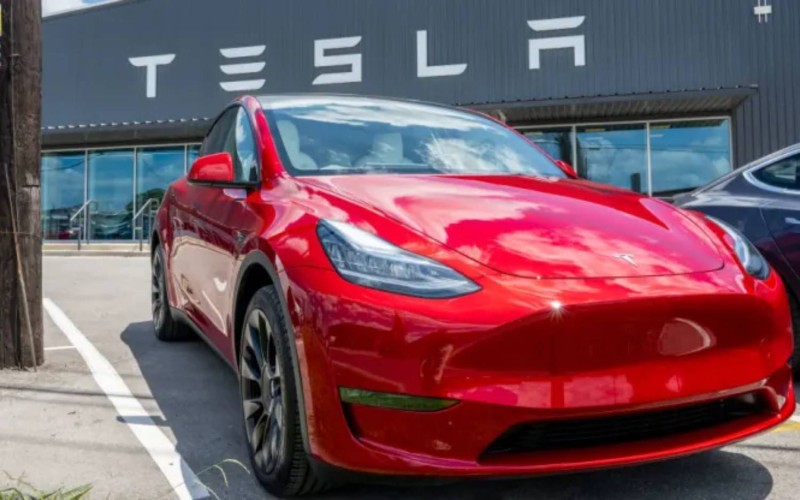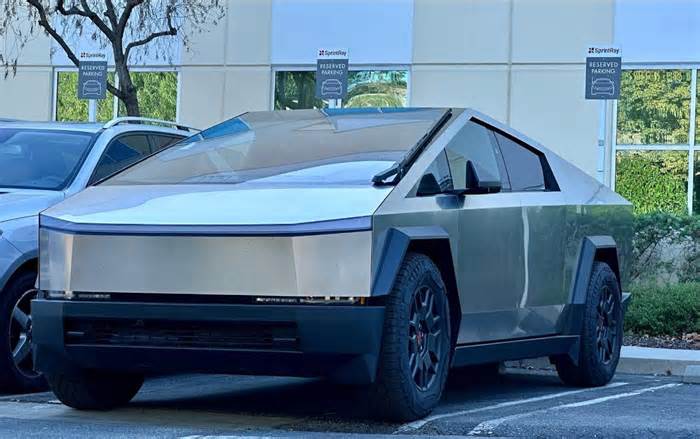
10 predictions for the space economy in 2025
- by AOL
- Nov 23, 2024
- 0 Comments
- 0 Likes Flag 0 Of 5

November 23, 2024 at 10:00 AM
2025 could prove to be one of the most transformative years on record for the space economy.
Between Elon Musk’s close ties with the incoming president, a new administration that is expected to be strongly pro-growth and anti-regulation, and the emergence of Starship, a rapidly reusable rocket that will shake up all the givens of accessing orbit, we are on the verge of significant changes that accelerate the growth of the space economy.
There are pros and cons to these upcoming changes. On the one hand, a more pro-growth administration will reduce and simplify the abundance of federal and local regulations that hamper new launch and development efforts and increase the costs for businesses. It could also lead to even more privatization of US space operations and greater federal funding support for space companies developing dual-use technologies. On the other hand, strong deregulation could prioritize growth over environmental protections. It could also pose challenges to the Earth observation sector and other climate monitoring technology.
Another key question is how much more dominant will SpaceX become in the next four years? The company is already the apex player in launch (the modern space economy wouldn’t even exist without the Falcon 9), so will its few competitors be innovative and strategic enough to keep up with the major growth that is coming?
Musk’s close ties to the president-elect are only part of the equation here. The arrival of Starship will have a monumental impact on the space economy by accelerating growth in existing markets, enabling entirely new industries, and making existing infrastructure obsolete.
As we look ahead, here are 10 predictions for the space capital markets in 2025.
SpaceX's mega rocket Starship lifts off for a test flight from Starbase in Boca Chica, Texas, Tuesday, Nov. 19, 2024. (AP Photo/Eric Gay)
(ASSOCIATED PRESS) 1. The next four years
Under the new administration, expect an even greater focus on promoting the space economy and on commercial space integration into government programs. Given Musk’s role in the administration and as one of the largest donors of the campaign, SpaceX will be the greatest beneficiary, but others will benefit as well, most notably from a light-touch regulatory regime for novel space activities overseen by the Commerce.
2. Starship comes online
Starship will reach orbit and begin operational flights in the first half of 2025, carrying Starlink V2 satellites. With its rapidly accelerating test program reaching a nearly monthly launch cadence in 2024, Starship will double its flight rate in 2025, aided by less regulatory resistance from the FAA, which Musk will have influence over in his new role as the head of the Department of Government Efficiency, or DOGE.
This vehicle will usher in the next phase of the space economy by significantly reducing the cost and complexity of payload missions; opening the door to crewed missions to the Moon and Mars, as well as lunar development; and setting the stage for emerging industries ranging from orbital habitats and manufacturing platforms to point-to-point travel and extended stay tourism in orbit and beyond.
3. Mars or bust
Expect an acceleration of plans for a crewed landing on Mars using primarily SpaceX/Starship architecture, unlike the more complicated NASA-led architecture for Artemis. Support for Artemis will likely continue but will be accompanied by a major review and reconsideration of architecture.
For example, a significant number of major programs, such as SLS, Orion, and ML2 are over budget, behind schedule, and/or otherwise troubled. However, any changes to SLS would likely cause domestic headaches, particularly at Marshall Space Flight Center in Huntsville, Ala., which supports 24,000 jobs and manages the SLS program. Additionally, the Gateway was designed to accommodate international collaboration in the Artemis program but with an America-first approach, and this approach could find less support.
4. More competition for SpaceX despite a direct line to the White House
Although SpaceX holds a dominant position in launch and satellite internet, 2025 will see competition emerge from several key players. Amazon’s (AMZN) Project Kuiper will begin operations next year, which poses the single greatest threat to Starlink’s market dominance. Direct-to-device connectivity will come online in 2025, with Starlink V2 and Apple (AAPL) moving to improve space-based communications for iPhones with a $1.7 billion investment in GlobalStar and AST SpaceMobile delivering for telecom partners like AT&T (T) and Verizon (VZ).
Starlink will also see increased global competition from the Chinese G60/Thousand Sails constellation, which will see half of its first phase launched in 2025. New launch vehicles will also come online next year, including Rocket Lab’s (RKLB) Neutron and Blue Origin’s New Glenn. These will pose a direct challenge to the Falcon 9 and Falcon Heavy, although Starship is poised to move the goalposts and supersede them.
5. Space Superiority
Geopolitical strains continue to fuel an increase in US Defense spending, with benefits for the US Space Force (USSF), which will be accelerated under the new administration. We expect this to show up most clearly in Resilient Global Positioning Systems (R-GPS) and Alternative Positioning, Navigation, and Timing (AltPNT) as conflicts continue and China’s BeiDou continues to displace GPS in aligned countries.
Through Starshield, the USSF will increasingly rely on SpaceX for national security missions across GPS, geospatial intelligence, satellite communications (SatCom), space domain awareness, in-space transportation, and more. The establishment of a Space National Guard is inevitable under the new administration and will further expand public-commercial alliances and technology integrations.
6. Incumbents adjust to the new world order
In 2025, Boeing (BA) and Airbus (AIR.PA) will sell off their space businesses after failing to keep up with the pace of change. These divestitures by entrenched government contractors mark a pivotal moment in the space economy, as it changes the competitive landscape, establishes a new power broker system, and creates new opportunities and risks in the government’s extended capabilities in space.
Meanwhile, expect an acceleration in SatCom M&A as leading incumbents — such as SES (SES) and Intelsat (combined in 2024), DirectTV and Dish (2024), Viasat and Inmarsat (2023), Eutelsat and OneWeb (2023) — push for greater consolidation to better compete with Starlink and other new non-geostationary satellite orbit (NGSO) entrants.
7. Connecting the digital and physical worlds
Over the next year, artificial intelligence will continue to transform capabilities across the space economy, but it will be most prevalent in “spatial intelligence” as it facilitates the integration of geospatial data into Big Tech.
The successful integration of MapBox with OpenAI’s ChatGPT search is just one early example of the possibilities evolving in this marketplace. World Labs, founded by AI pioneer Fei-Fei Li, has raised $230 million to develop spatially intelligent large world models (LWMs) that can understand and reason about the 3D world from images and other modalities.
Companies are already in a race to automate systems that enable proliferated architecture, and AI is the only real solution to the bottleneck. Expect these efforts to accelerate dramatically in 2025, particularly due to stronger federal support for Big Tech and AI innovation as the next administration looks to increase its lead over China.
8. Coordination of orbital traffic goes from elective to essential
While China has launched a lot of rockets to date, it still only comprises a small percentage of the total global mass to orbit. Expect that to change in 2025 as Chinese mega-constellations like G60, Geely, and more begin to launch in earnest. The exponential growth in satellites in orbit (currently faster than Moore’s Law) will force the conversation of coordination despite geopolitical tensions.
Due to the US government’s restrictions on direct collaboration with China, these efforts will be led by private industry. This will create a new wave of privatization in space traffic coordination and there is a strong probability that the Commerce Department’s Traffic Coordination System for Space (TraCSS) program will either be canceled or significantly restructured to emphasize commercial data.
9. Political climate
Under the next administration, the US is about to make a sharp turn on climate policy, which will have negative impacts on certain environmental protections and new efforts by geospatial intelligence (GEOINT) companies to improve climate monitoring and solutions.
The biggest risks for the GEOINT industry are a reduction in federal funding and specific programs, like NASA's Earth Observing System (EOS) and NOAA’s Modeling, Analysis, Predictions, and Projections (MAPP) programs, as well as an overall challenge (and perhaps dismantling) of environmental, social, and governance (ESG) incentives for businesses and investors.
At the same time, extreme weather events like heat waves, floods, and wildfires will become increasingly frequent, impacting more people and further straining insurance markets. Private capital will have to step up to continue to fund energy transition and climate projects, like MethaneSAT and FireSAT, in an effort to fill the gap left by cuts in climate change and civil Earth observation programs by the new administration.
Hurricane Milton is seen off the coast of Yucatan Peninsula on Oct. 8, 2024, from the International Space Station as it orbited 257 miles above. (NASA via Getty Images)
(NASA via Getty Images)
Please first to comment
Related Post
Stay Connected
Tweets by elonmuskTo get the latest tweets please make sure you are logged in on X on this browser.
Sponsored
Popular Post
Middle-Aged Dentist Bought a Tesla Cybertruck, Now He Gets All the Attention He Wanted
32 ViewsNov 23 ,2024
Tesla: Buy This Dip, Energy Growth And Margin Recovery Are Vastly Underappreciated
28 ViewsJul 29 ,2024






 Energy
Energy



















